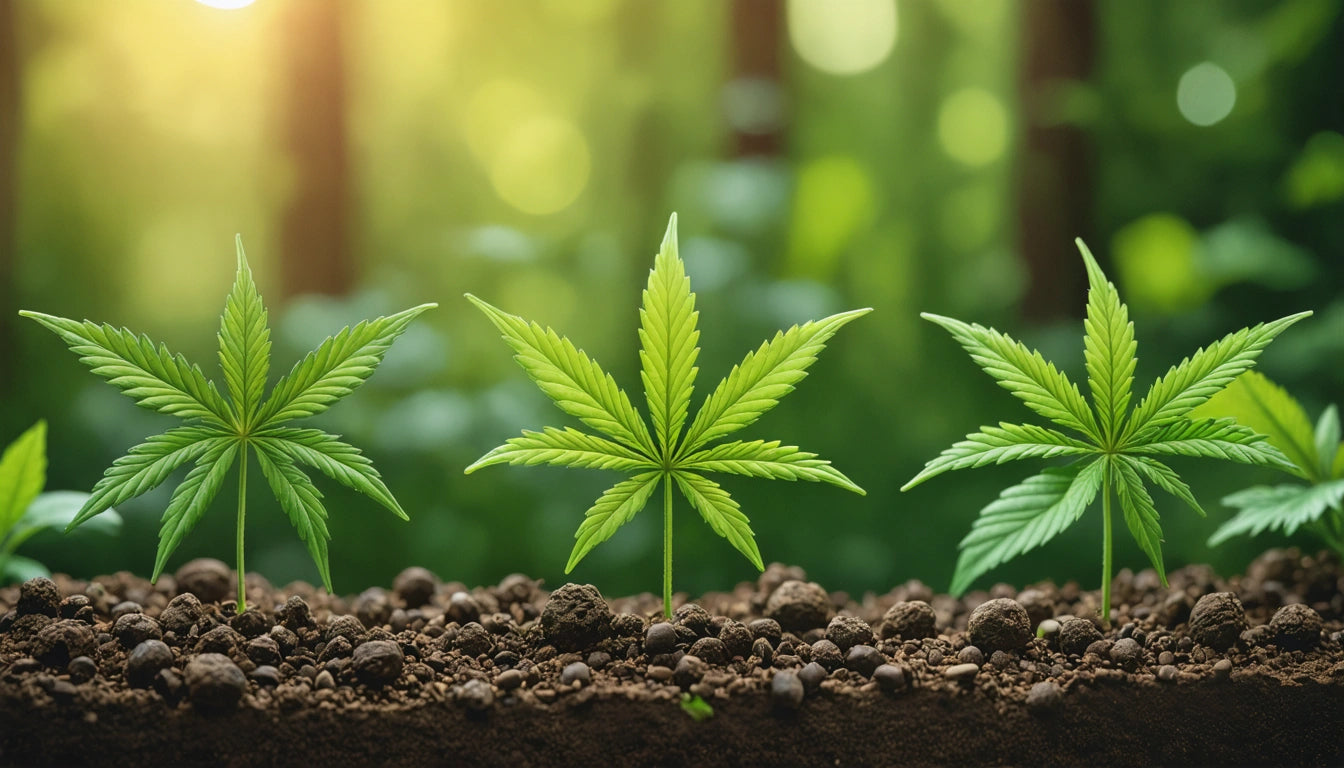Table of Contents
How to Prevent and Fix Seedlings Falling Over and Stunted Growth
Watching your carefully planted seedlings suddenly topple over or stop growing can be frustrating for any grower. When seedlings fall over or experience stunted growth, it typically indicates underlying issues that need immediate attention. Understanding why your seedlings are falling over and how to address stunted growth will help you cultivate stronger, healthier plants from the start.
Common Causes of Seedlings Falling Over
When seedlings collapse, several factors may be responsible:
- Damping off: A fungal disease that attacks the stem at soil level, causing it to thin and collapse
- Leggy growth: Insufficient light causes seedlings to stretch, becoming thin and weak
- Overwatering: Excessive moisture weakens stems and promotes fungal growth
- Poor soil structure: Compacted or nutrient-poor soil fails to support proper root development
- Improper planting depth: Seeds planted too deep or too shallow can develop unstable stems
According to our essential guide to seedling care, light quality and duration are particularly critical during the first two weeks of growth.
Preventing Seedling Collapse: Essential Care Techniques
Proper Lighting
Insufficient light is a primary reason why seedlings fall over. When light is inadequate, seedlings stretch toward the available light source, resulting in long, weak stems that cannot support themselves.
To prevent this:
- Position grow lights 2-4 inches above seedlings
- Provide 14-16 hours of light daily
- Rotate trays regularly for even growth
- Use full-spectrum lights that mimic natural sunlight
As detailed in our guide to caring for weed seedlings, proper light positioning prevents the stretching that leads to collapse.
Optimal Watering Practices
Overwatering is a common mistake that leads to fallen seedlings. When soil remains constantly wet, stems become weak and susceptible to fungal attacks.
Follow these watering guidelines:
- Water from below when possible to encourage downward root growth
- Allow the soil surface to dry slightly between waterings
- Use a spray bottle for gentle moisture application
- Ensure proper drainage in all containers
Fixing Fallen Seedlings: Rescue Strategies
If your seedlings are already falling over, take these immediate steps:
Emergency Support
For seedlings that have fallen but aren't damaged:
- Gently prop them up with small stakes or toothpicks
- Add a thin layer of additional soil around the base for support
- Reduce watering until stems strengthen
- Increase air circulation with a small fan on low setting
When working with delicate seedlings, many growers find that using specialized gardening tools designed for precision work can make the difference between saving or losing vulnerable young plants.
Treating Damping Off
If fungal disease is causing your seedlings to fall over:
- Remove affected seedlings immediately to prevent spread
- Apply a light dusting of cinnamon (a natural fungicide) to soil surface
- Improve air circulation
- Reduce humidity levels
- Consider a commercial fungicide as a last resort
Addressing Stunted Growth in Seedlings
When seedlings survive but fail to grow properly, several factors may be limiting their development:
Nutrient Imbalances
Stunted seedlings often suffer from improper nutrition. Signs include:
- Yellowing leaves (nitrogen deficiency)
- Purple stems (phosphorus deficiency)
- Curled leaf edges (potassium issues)
To fix stunted seedlings with nutrient problems:
- Apply a quarter-strength seedling-specific fertilizer
- Ensure proper pH (5.8-6.2 for soilless media, 6.0-6.5 for soil)
- Consider transplanting to fresh media as recommended in our transplanting guide
Temperature Stress
Seedlings grow best within specific temperature ranges:
- Daytime: 70-75 °F (21-24 °C)
- Nighttime: 65-70 °F (18-21 °C)
Temperatures outside these ranges can cause stunted growth. Use seedling heat mats for cold conditions and improve ventilation for excessive heat.
Environmental Factors Affecting Seedling Health
Beyond the basics, several environmental factors influence whether seedlings stand tall or fall over:
Air Circulation
Proper airflow strengthens stems through a process called thigmomorphogenesis, where plants respond to mechanical stimulation by growing stronger cell walls.
Implement these practices:
- Use a small oscillating fan near seedlings (not blowing directly on them)
- Ensure proper spacing between plants
- Remove humidity domes once seeds have germinated
Soil Quality
The growing medium significantly impacts seedling stability and growth rate. For optimal results:
- Use a light, well-draining seed-starting mix
- Avoid garden soil which may contain pathogens
- Consider adding perlite or vermiculite for improved structure
- Pre-moisten soil before planting to prevent displacement during watering
As noted in our comprehensive seedling guide, the right growing medium provides both support and nutrition.
Advanced Growth Strategies for Robust Seedlings
To develop exceptionally strong seedlings that resist falling over and grow vigorously:
Hardening Off
Gradually exposing indoor-grown seedlings to outdoor conditions strengthens their stems and overall resilience. Start with 1-2 hours of filtered sunlight, gradually increasing exposure over 7-10 days.
Root Development Focus
Strong roots lead to strong stems. Encourage robust root growth by:
- Using air-pruning containers
- Applying root-stimulating products containing mycorrhizae
- Maintaining consistent moisture without overwatering
- Following proper transplanting techniques as detailed in our repotting guide
By implementing these preventative measures and rescue techniques, you can address the frustrating issues of falling seedlings and stunted growth. Remember that seedlings represent the foundation of your growing journey, and the care you provide during this critical stage will determine the health and productivity of your mature plants.











Leave a comment
All comments are moderated before being published.
This site is protected by hCaptcha and the hCaptcha Privacy Policy and Terms of Service apply.